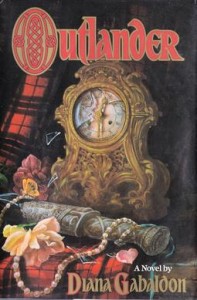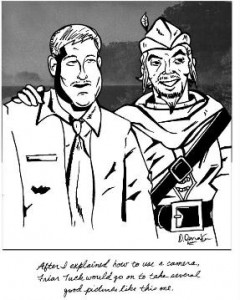This is mark Joseph “young” blog entry #57, on the subject of Multiverse Variety.
This is about the creation of my book Verse Three, Chapter One: The First Multiverser Novel, now being posted to the web site in serialized form. This “behind the writings” look definitely contains spoilers, so you might want to read the referenced chapters before reading this look at them. That link will take you to the table of contents for the book; links below (the section headings) will take you to the specific individual chapters, and there are (or will soon be) links on those pages to bring you back hopefully to the same point here. There were also numerous similar previous mark Joseph “young” web log posts:
- #18: A Novel Comic Milestone (which provided this kind of insight into the first six chapters),
- #20: Becoming Novel (covering chapters seven through twelve),
- #22: Getting Into Characters (for chapters thirteen through eighteen),
- #25: Novel Changes (chapters 19 through 24),
- #27: Novel Continuation (chapters 25 through 30),
- #30: Novel Directions (chapters 31 through 36),
- #33: Novel Struggles (chapters 37 through 42),
- #35: Quiet on the Novel Front (chapters 43 through 48),
- #37: Character Diversity (chapters 49 through 56),
- #39: Character Futures (chapters 57 through 60),
- #43: Novel Worlds (chapters 61 through 66),
- #47: Character Routines (chapters 67 through 72),
- #50: Stories Progress (chapters 73 through 78),
- #53: Character Battles (chapters 79 through 84), and
- #55: Stories Winding Down (chapters 85 through 90).
This picks up from there. In these chapters we see very different worlds and adventures.
There is some essential background to the book as a whole in that first post, which I will not repeat here.
Quick links to discussions in this page:
Chapter 91, Hastings 32
Chapter 92, Slade 30
Chapter 93, Kondor 31
Chapter 94, Hastings 33
Chapter 95, Slade 31
Chapter 96, Kondor 32
Even reading the first paragraph here, I relate to it—the feeling of simply staying in a warm bed.
I was building this world from a different one. Eric Ashley thought it was supposed to be the same world, but really it was only the same creatures at a more primitive cultural state—things I had not yet decided at this point. (After all, if I can have humans in many different universes, why can’t there also be many different universes in which my humanoid avians are the dominant creatures?) However, I wanted to dial down the power for this one, so I decided the psionics bias wasn’t high enough for levitation. That requires what might be considered a moderate bias, so I still had room to decide that other things were possible—and as Lauren notes, I could still change my mind. Ultimately I put it where it was possible for her to “levitate” other objects (telekinesis) but not herself (levitation), which worked for what I needed to do.
I was making world decisions on the fly at this point. I wanted this world to be a bit less magical and a bit less psionic than Lauren’s previous ones, to prevent her from being the superhero, but since I hadn’t decided exactly how much I was moving slowly.
The magic worked, but there wasn’t any particular way Lauren could be certain it worked, only that she attempted it and felt a direction.
I had already made some decisions about this world. It was my “gather”, the place where the three were going to meet and work together. I knew that in the end Bob Slade was going to face the final challenge and defeat it, that Joe Kondor was going to use his tracking skills, and that Lauren was going to sacrifice herself for the sake of the mission. The rest I was creating as I went.
The road eventually became indefensible; it was not something the indigs (indigenous life forms) would have created. I wrote it off to a dry watercourse which they followed into the woods when they foraged, thus smoothing and compressing the bottom, but it’s weak. Fortunately I never had to defend it.
A couple years before I wrote the novel I had read about quantum non-locality and thought about using it for the kind of communicator I describe. I published a web page explaining the idea, and got a few e-mails about it. Eventually someone wrote to say that what I proposed probably would not work—but the novel was already in print, so there was no changing it. Some years later, someone else wrote and asked if he could use the idea in one of his own books, and I said sure, but I’m told it won’t actually work. He seemed to think that was fine, that it was simply good to have a scientific-sounding explanation for a science fiction device. Of course, one of Clarke’s Laws says, in short, that scientists are usually wrong when they say something is impossible.
The work aboard Destiny as part of engineering was raising Bob’s technical abilities. I used them a bit in a later book, but haven’t really tapped them yet.
I had developed Slade as a bit of a jack-of-all-trades, and it seemed appropriate to get him involved in installing components, much as he’d have done with cars back home.
A diplomatic mission was probably going to be a boring story, I thought, and the more so as Slade was not a diplomat; but a planet rejecting pressure to submit to the Federation was good basis for some action, and so I set up the action.
The rebel pirates was my recognition at this moment. I still don’t know what was in the crates.
I set up for combat without knowing exactly how I was going to handle it; but I thought this was a good starting position, and I’d work out something.
Talwin the priest was of course using prayer to strengthen and revitalize the men; Joe could not accept the possibility of that kind of magic, and so he relegates it to the realm of positive thinking.
I wanted to get Kondor outside the walls, because nothing more or interesting was going to happen until I did; but the castellan wasn’t going to agree to it without a compelling reason, so it was time to bring the vorgo into play.
As I broached the notion of Joe going on the offensive outside the walls, I was looking for a way to move the story forward and bring a dramatic ending—but it was obvious that such a one-man assault really made no sense. However, it would make sense to use the vorgo as a weapon against the specters, and since it would be difficult to target them specifically from the distance of the walls, a commando mission to get it into their midst was the best option.
I knew at this point that he was going to die outside the walls, and I didn’t want him to be too far from his gear, but it didn’t make sense for him to take it all. I knew he was bound for the parakeet world, with Lauren, so it would be all right, but I didn’t want to run another searching for gear scenario and wasn’t sure how to avoid it.
I also wanted him to have a low-tech weapon that didn’t rely on ammo with which he’d had at least some experience, so I gave him the mace and cause to use it at this point. I hadn’t yet figured out how I was going to get him to use it before his other weapons were exhausted, but he was going to need it. I note that I’ll do that in games sometimes–give a player character something I know he’s likely to need in the future that he doesn’t particularly want in the present.
I had envisioned a part of the end of the book, and it required Joe to fight a long battle that exhausted most of his ammo and left him with hand-to-hand combat. I thus needed to put such a weapon into his gear, and a mace was both simple enough and connected already to Bob if I needed to talk about training Joe to use it. I did not do that until considerably later (the fourth book), but it was in view at this point as a possibility.
It is also a mission that makes no sense to him, and probably had he not approached them he would not have volunteered and they would not have asked him. So it was important to have him ask to fight outside the wall.
I notice that sometimes I split infinitives in this book. I have since somehow had it drilled into me not to do that, and it bothers me when I see it, which suggests to me that I’m being too strict in my grammar sometimes. I’m sure very few people recognize it—but I do it less in later books.
At some point I decided that the bird people I had created for the demo world The Valley would work well in this gather world. I took away all the trappings of that world—the psionic monks, the meteorite storms and rings around the planet from the broken moon, the avian/reptilian predators—and just made them a simple primitive group.
The wigwam is a traditional Native American home design in the northeast corridor. It in some ways perhaps resembles a beaver’s home but on land, comprised of sticks and mud. It struck me as also similar to an enclosed nest. Some birds do build enclosed nests, but these are relatively rare; it is also rare for such nests to be built on the ground. However, it seemed to work, to push the nest concept toward the wigwam concept for a small humanoid flightless avian race.
Seeing brightly-colored humanoids, the natural response would be to assume they were dressed in bright colors. They aren’t, but that’s how it would appear from the hillside above.
Lauren is on one side of a valley, coming down from a low mountain; the mountains to the other side are higher, and of course she can see them—one cannot really see the mountain on which one is standing, only the immediate slope.
I’ve seen sunsets and sunrises in the mountains. They are most impressive, really, when you are sitting with your back to the sun looking at the far mountains where the shadows are gradually rising or receding.
I was trying to give the feeling of serenity and beauty, and I could only do so through Lauren’s eyes. The hymn came forth as a way of presenting the impact it had on her.
Somehow the printed version of this chapter made it “93”, a typographical error no one caught.
It was time to do ship-to-ship combat, and I needed to figure out a way to make The Destiny a significant force in battle. I was attempting to think of something that would make my spaceship different from all the many battling spaceships I had seen, and I came up with the notion of a pair of independently controlled maneuverable gun batteries. This would give the ship the tactical advantages of launching fighter planes without putting fighter pilots at risk, as they could be remotely controlled from the bridge and could flank the enemy. The idea of independently controlled weapon batteries was a rather sudden solution which I had never seen. They are probably quite logical now in a world of drone fighters, but at the time I was not aware of anything like them.
“OTG” is “orbit to ground” weapons. I figured readers would get it from the context.
The cracked pipe was because I really didn’t want Slade to sit and watch the entire fight—partly because I didn’t want to describe more of it, and partly because it wasn’t that interesting. If I put him to work in engineering fixing the cooling system, that meant he was contributing something. The broken pipe would save me the trouble of continuing the blow-by-blow on the battle. The problem with battles is that you have to keep them changing. They have to seem risky, edgy, as well as new, but at the same time within the bounds of what the reader expects of the players. If the battle is short, it makes the enemy seem weak; if it’s long, it gets boring as it bogs down in detail.
The football imagery is natural for Kondor because the vorgo looks so much like a ball, although more like a bowling ball than any other kind; but football strategy makes sense for it.
I am glad I realized the problem with the eye patch; it’s one of those things that sometimes slips by in games, when a character has a disability with which the players are unaccustomed.
Destroying skeletons by shattering their pelvises seemed a solution to the problem of facing them at range.
The spectres were guaranteed to be tougher than anything else they had faced; I needed to make them so. It was not so hard, really–in game terms, they had a very high resistance to all kinetic attacks, because the weapons usually passed through. Looking for an explanation that would work in the book, I decided that they only did damage if they managed to dislodge the fragments of matter suspended in the glow.
His notion that zombies in the setting of a graveyard are horrors, but on the battlefield they’re just another monster, probably owes something to the Dungeons & Dragons™ games I’ve run: players don’t really worry about lower-level undead as if they were really undead, they just treat them like any other creature. The specters are different because there are features about them that empower them; the zombies are just ugly putrid bodies that need to be killed.
It was quicker, I thought, to switch to the pistol than to switch clips on the rifle; but whether or not this is so, I wanted to keep a clip for the rifle, so he would not be out of that ammo yet.
The advantages of rifles over pistols are pretty much all about range, and at point blank range those advantages are insignificant; for some rifles, the length of the weapon becomes a liability in close combat. The M-16 seems to be a weapon that can be fired accurately “from the hip”, as it were, but it still is not more accurate at short range than a pistol.
Interest in these “behind the writings” continues, so I’m still thinking they’re worth producing. Feedback is always welcome, of course. Your Patreon support is also needed to maintain this.
[contact-form subject='[mark Joseph %26quot;young%26quot;’][contact-field label=’Name’ type=’name’ required=’1’/][contact-field label=’Email’ type=’email’ required=’1’/][contact-field label=’Website’ type=’url’/][contact-field label=’Comment: Note that this form will contact the author by e-mail; to post comments to the article, see below.’ type=’textarea’ required=’1’/][/contact-form]









